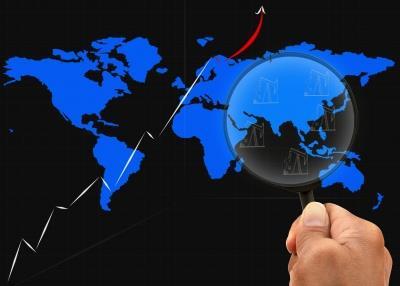Cyber, fire and explosion, market developments, and new technologies all feature among the greatest threats facing Asia Pacific organisations. Here’s how to mitigate the risks
Cyber risk rose to top spot in the list of risk concerns for businesses in Asia Pacific region, according to Allianz Commercial’s Risk Barometer 2024.
Cyber incidents such as cybercrime, IT network and services disruptions, malware/ransomware, data breaches, and fines and penalties, were declared the most important business risks in 2024 by risk professionals in the region, leapfrogging business interruption, which was the top concern last year.

The Risk Barometer surveyed 3,069 risk professionals across the world and ranked risks according to the percentage of responses that selected them as a top priority for 2024.
Cyber risks were cited as the biggest concern by 38% of respondents in the Asia Pacific region overall, and were the top-ranked risk in Australia, India and Japan. The results from Asia Pacific chimed with the global ranking, which placed cyber as the top concern for companies of all sizes.
How to tackle cyber threats
With hackers remaining one step ahead in terms of intruding into IT systems, there needs to be a shift in focus from prevention to early detection. If attacks are detected quickly, the risk of them escalating is greatly diminished.
“Looking forward, detection tools will be the next logical step for most companies to invest in. Ultimately, early detection and effective response capabilities will be key to mitigating the impact of cyber-attacks, as well as ensuring a sustainable cyber insurance market going forward,” noted Michael Daum, global head of cyber claims at Allianz Commercial.
Fire and explosion
A big riser in the list of concerns for risk professionals in the Asia Pacific region was fire and explosion, which climbed to the rank of fourth, up from eighth last year, and was ranked the biggest risk concern in Malaysia and South Korea.
Although the risks of fire and explosion are well understood and usually well-managed in so far as they can be; fire and explosions remain a significant cause of business interruption and supply chain disruption.
“The degree of disruption from fire and explosion can be very high, as it can take longer to recover from than many other perils, and the impact on suppliers can often be great,” commented Alberto Baroni, a Business Interruption Group Leader at Allianz Commercial.
“Damaged plants can sometimes take years to rebuild and get production back up and running to full capacity.”
“For example, the pharmaceutical and chemical sectors deal with highly flammable and explosive materials. Damaged plants can sometimes take years to rebuild and get production back up and running to full capacity.”
In addition, the increase in electrification, and growing use of lithium-ion batteries, have also changed the risk picture for fire and explosions.
The inadequate handling and transportation of these batteries has been linked to several large fires, both at sea and on land, in recent years.
How to tackle fire and explosion risk
Businesses can reduce the risk of an incident by regularly assessing and updating prudent fire mitigation practices, including preventative measures and fire extinguishing measures. Businesses also must establish and regularly test and reassess contingency plans to lessen the risk of loss should an incident take place.
Christian Sandric, regional managing director of Allianz Commercial Asia, says, “Companies need to navigate an increasingly volatile global business environment, and this reiterates the importance of a strong risk management culture, as well as robust response measures and insurance solutions.
“For example, companies are increasingly exploring multinational policies that facilitate swift incident response and can help minimise loss and damage, and alternative risk transfer solutions to cover risks that are difficult to insure in the conventional market.”
Market developments and new technologies
Market developments, at number 8, and new technologies, at number 9, were new entrants in the top 10 ranking for Asia Pacific in 2024.
Globalisation and protectionism, and various sanctions regimes around the world in response to global events, mean that there is likely to be greater consolidation as businesses find their access to new markets restricted.
A global shortage of skilled labour, because of demographic change, means the war for talent has reached new levels across all sectors. This can be a particular challenge for mid-sized companies.
“Businesses of all sizes need to consider increasing their prediction and prevention capabilities”
And the advent of new technology, notably Artificial Intelligence (AI) brings with it not just new opportunities but new and untested risks. Many of the risks highlighted by the Risk Barometer 2024 are interconnected and interlinked and evolving rapidly.
Businesses of all sizes, therefore, need to consider increasing their prediction and prevention capabilities, the advanced use of data and analytics, and have proactive and holistic risk management strategies in place to meet these challenges.




















No comments yet